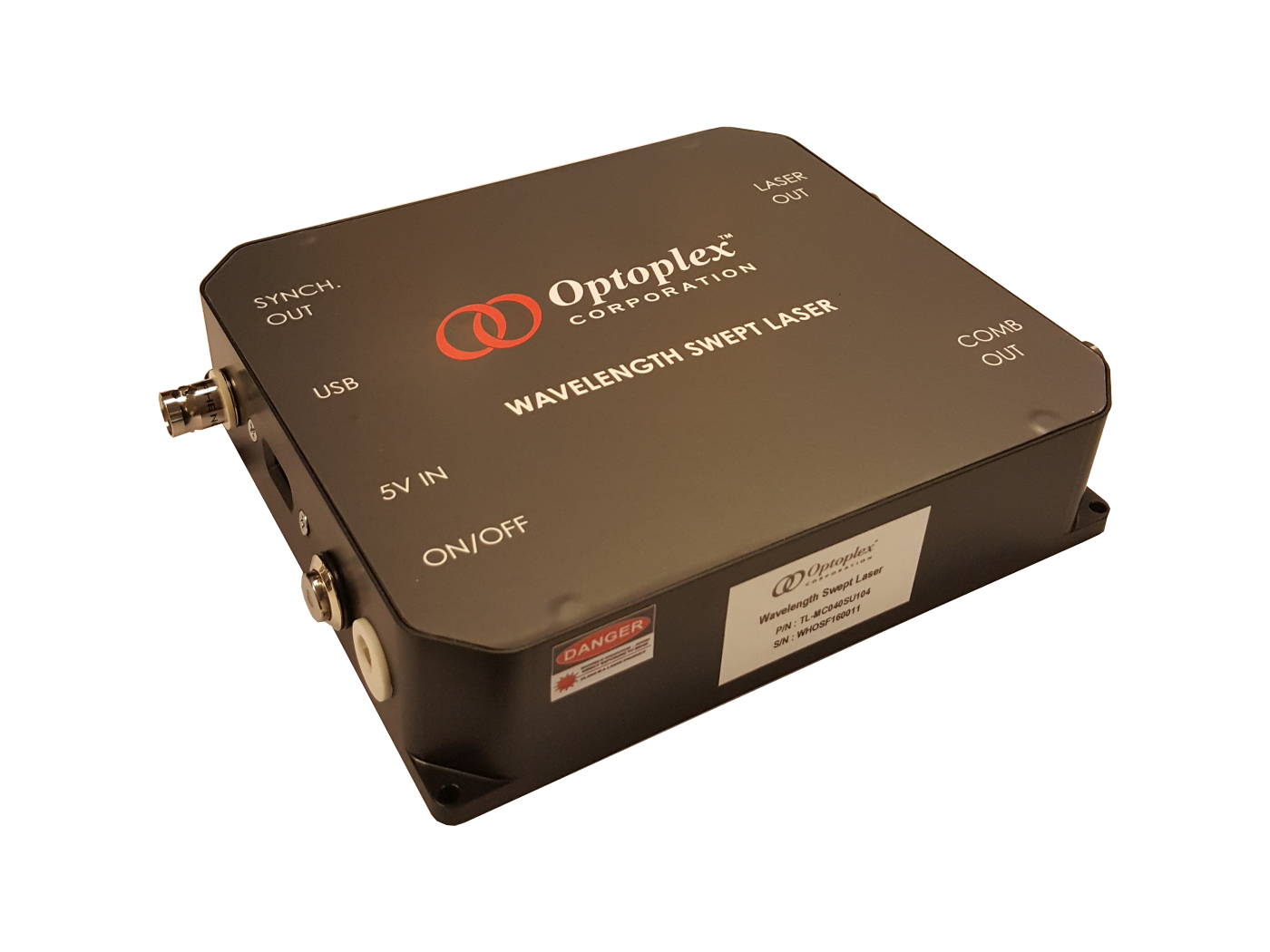Contents

Source: Optoplex Corporation
Understanding Wavelength-Swept Lasers
Operation Principles
Wavelength-swept lasers are designed for applications requiring rapid tuning of the optical wavelength of a laser source over a certain range. The operation involves rapid periodic changes in the laser output frequency, often following a triangular frequency modulation pattern. Different types of wavelength-swept lasers have been developed to achieve high-speed tuning capabilities.
Current Tuning
Laser diodes can be wavelength-tuned by modulating their drive current, enabling relatively rapid tuning. However, achieving precise linear frequency chirps may require additional measures such as pre-distortion of the input current waveform.
Wavelength-swept Filter in a Laser Resonator
A common operation principle involves using a laser with a gain medium and a fast bandpass filter in its resonator. Tuning the filter’s transmission wavelength leads to corresponding laser wavelength changes. This method is used in fiber lasers and external-cavity diode lasers for high-speed tuning.
Fourier-domain Mode Locking
Fourier-domain mode locking (FDML) involves modulating the transmission wavelength of an intracavity filter to achieve high sweep frequencies. This method allows for steady-state laser operation with minimal noise and high sweep frequencies, making it suitable for applications like optical coherence tomography.
Sources With Dispersion Tuning
Some wavelength-swept lasers use dispersion tuning, where laser operation is based on active mode locking and elements with large chromatic dispersion. This approach allows for tuning the laser to operate at different wavelengths within a narrow range.
Wavelength Calibration
While wavelength-swept lasers may not exhibit constant frequency sweep rates, they can be combined with self-referenced frequency combs for wavelength calibration, enhancing their utility in applications requiring precise wavelength control.
Applications of Wavelength-swept Lasers
Frequency Domain Optical Coherence Tomography (FD-OCT)
Wavelength-swept lasers are commonly used in FD-OCT for high-resolution imaging in fields like ophthalmology and dermatology. The ability to sweep through a broad wavelength range at high scanning speeds enables detailed image acquisition.
Fiber-optic Sensor Interrogation
These lasers are also employed in interrogating fiber-optic sensors containing fiber Bragg gratings sensitive to local strain and temperature changes. Rapid scanning of probe laser wavelengths is essential for efficiently interrogating multiple sensors.
Laser Range Finding and Other Applications
Wavelength-swept lasers find applications in laser range finding and suppressing nonlinear reflections in high-power fiber amplifiers, among other uses.
Conclusion
Wavelength-swept lasers offer versatile solutions for applications requiring rapid and precise tuning of laser wavelengths. Understanding the operation principles and applications of these lasers can help in utilizing them effectively across various fields.
![]()
Source: Hamamatsu Photonics
Feel free to comment your thoughts.



